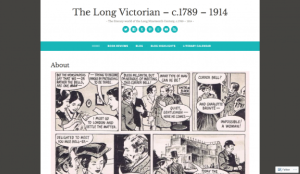 |
February 23, 2018 Volume 24, Number 8 |
Research and Education |
General Interest |
Network Tools |
Revisited |
In the News |
Research and EducationBack to Top | |
 |
|
 |
|
 |
|
 |
|
 |
|
 |
|
 |
|
 |
|
General InterestBack to Top | |
 |
|
 |
|
 |
|
 |
|
 |
|
 |
|
 |
|
Network ToolsBack to Top | |
 |
|
 |
|
RevisitedBack to Top | |
 |
|
In the NewsBack to Top | |
New Study Investigates the History of Ancient Dice | |
|
How Centuries-Old Dice Reveal Changing Attitudes About Fate The Shape of Ancient Dice Suggests Shifting Beliefs in Fate and Chance How the Design of Dice Evolved Over Time The Ancient Origins of Dice Games of the Ancient World What is a Game?: Crash Course Games #1 Dice have been around for approximately 8,000 years and of course, are still widely used today in a variety of popular games. However, a recently published study demonstrates that the shape and design of European dice greatly evolved throughout history. The study, authored by Jelmer Eerkens of the University of California-Davis and Alex de Voogt of the American Museum of Natural History, is based on an examination of 110 dice unearthed in the Netherlands and 62 dice unearthed in the UK. Dice were first introduced to these regions approximately 2,000 years ago by the Romans. Unlike contemporary dice, these early dice were not symmetrical in shape. Around the year 1100 CE, dice became more standardized and smaller in size. In addition, the arrangement of dots on each die shifted from a sevens configuration (in which each pair of opposite planes on the die adds up to seven: 1,6; 2,5; 3,4) to a prime configuration (in which each pair of opposite planes adds up to a prime number: 1,2; 3,4; 5,6). During the Renaissance, however, dice switched back to the sevens configuration. By this time, dice were also uniformly symmetrical. Collectively, these changes made it so that dice games were truly games of chance, where players were equally likely to roll different number combinations. Eerkins notes that these changes in dice design coincided with the introduction of the mathematical field of probability: "People like Galileo and Blaise Pascal were developing ideas about chance and probability, and we know from written records in some cases they were actually consulting with gamblers. We think users of dice also adopted new ideas about fairness and chance or probability in games." [MMB] First up on our links this week are three articles summarizing this study. These summaries come from Brigit Katz at the Smithsonian Magazine, Veronique Greenwood of The Atlantic, and Christina Ayele Djossa at Atlas Obscura. The fourth link takes readers to a recent article in JStor Daily authored by James MacDonald, which summarizes research of ancient dice around the world. The fifth link takes visitors to a video recording of a 2012 lecture event at the Metropolitan Museum of Art. This event features three lectures addressing the history of ancient board games. Finally, the last link takes visitors to a Crash Course series all about the history of games. | |





